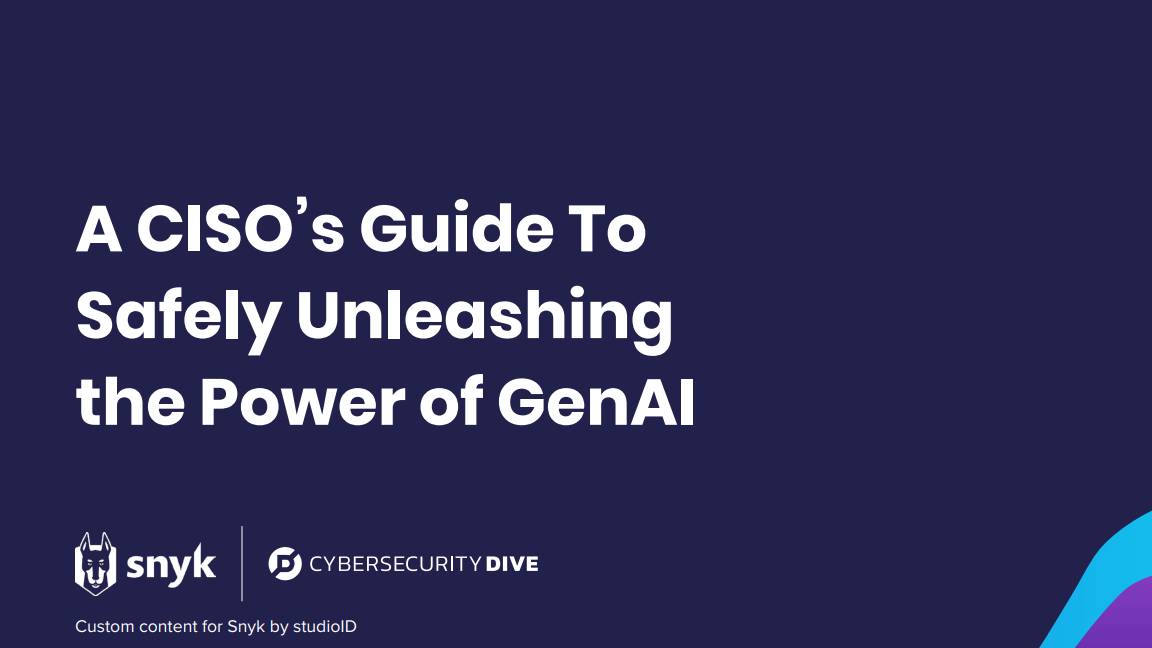Opening the black box: How to respond to transparency demands
Clear communication from MSPs can shift customer perceptions, eliminating the mystery and highlighting tangible IT benefits


The concept is simple. The customer has IT needs. The MSP addresses those needs, is paid for their trouble, and everyone is happy. But are they?
MSPs are reporting that many customers see them as a ‘black box’, where IT problems and requirements are fed in one end, and solutions delivered out the other, with no real understanding by customers of what is happening in-between. Behind this lies a need for greater transparency. Businesses may want to tighten their belts and demand to know exactly what they are spending their money on. They may be reviewing their procurement processes and assessing alternatives. They may want to know if they really need everything they are paying for.
There is also the matter of compliance. Businesses need to know more about their IT estates in order to help them remain compliant. While MSPs can help with compliance, reassurances that everything is in order won’t be enough – internal compliance teams will need more.
Being more transparent
MSPs don’t try and hide what they do, but their relationships with their customers often follow a familiar pattern. Their customers come to them with a need for their IT estates to be resilient and secure. And so the MSP offers a suite of services that does just that – remote monitoring and management (RMM) to help manage endpoints, users, and devices; layered security to help keep everything secure; disaster recovery services in case the worst happens; and so on.

This can mean if everything is running smoothly, the MSP has done its job, the company pays its monthly invoice, and there is no need for any real contact between the MSP and customer beyond the routine. So a request for greater transparency and more detail as to what the MSP is doing can seem ‘out of the blue’.
When in fact, this radio silence can make things worse, even if it means things are ticking along nicely. If a business isn’t clear what their MSP is doing, it can lead to the business questioning exactly what benefits the MSP is providing. While one side sees a lack of communication as a sign that everything is going well, the other side of the arrangement may not.
N-able’s recent survey of MSPs revealed that many are being asked by their customers to be more transparent. They shouldn’t wait for that call. Instead, MSPs should be proactive about transparency. By giving customers relevant data and better visibility into what is going on in their IT estates, they can better understand exactly what an MSP is doing for them.
ChannelPro Newsletter
Stay up to date with the latest Channel industry news and analysis with our twice-weekly newsletter
This can be tailored for the business if necessary, depending on their IT expertise. Those with a lower level may appreciate updates on the number of threats being stopped, the updates that have been applied to their endpoints, and so on. Those with a higher level of expertise could be given direct access to insightful dashboards and reporting tools.

By providing deeper analysis and reporting, MSPs can also provide better business acumen by giving customers a greater understanding of their day-to-day IT operations. This allows them to make data-driven decisions and identify gaps for services that could increase their IT stability and satisfaction.
Similarly, MSPs shouldn’t wait for compliance teams to contact them for the information they need. While they don’t necessarily need to be complete compliance experts, MSPs should have a good idea of what companies need to be compliant, such as where data is held, access controls in place, encryption in place for certain types of data, and so on. Starting this conversation puts MSPs in an excellent position to be partners in reaching and maintaining compliance with regulations.
Good and bad transparency
RELATED WHITEPAPER

Many MSPs may feel like they are already transparent in what they do, but there is a good chance it is not the level of transparency that businesses need. Many MSP websites list all the services they offer, such as their service desk, managed detection and response (MDR), patch management, and so on. They may also list some of these as separate line items on an invoice and see this as transparency: ‘These are the services we offer, and this is how much you pay for each one.’
This is not necessarily bad practice, but customers need more. Many of these services are the minimum that MSPs need to offer to be effective, particularly when it comes to security. Layered security is only effective because all the layers work together, so removing one of those layers is not optional.

When customers want greater transparency from their MSPs and want to know what they are getting for their money, MSPs should consider what this means. It’s often not about services provided, but about the outcomes those services deliver. Being transparent means giving the customer more information about what the MSP is doing, rather than about how they are doing it. Care should be taken to understand what the customer needs to better understand what an MSP does for them – opening a black box to reveal a complex mess of wiring and components won’t make the workings any less opaque.

Michael Adler has served as EVP as well as chief technology and product officer at N-able (formerly SolarWinds MSP) since March 2021. Mr. Adler previously served as chief product officer at RSA Security, a computer and network security company, from September 2020 to March 2021. Previously, he served as VP, Product at RSA Security from January 2016 to September 2020. Prior to joining RSA Security, Mr. Adler held roles at Constant Contact, Symantec, IMlogic, and Switchboard, Inc. Mr. Adler holds an M.B.A. from Boston College and a B.S. in Math/Computer Science from Carnegie Mellon University.
-
 What to look out for at RSAC Conference 2025
What to look out for at RSAC Conference 2025Analysis Convincing attendees that AI can revolutionize security will be the first point of order at next week’s RSA Conference – but traditional threats will be a constant undercurrent
By Rory Bathgate
-
 Ransomware attacks are rising — but quiet payouts could mean there's more than actually reported
Ransomware attacks are rising — but quiet payouts could mean there's more than actually reportedNews Ransomware attacks continue to climb, but they may be even higher than official figures show as companies choose to quietly pay to make such incidents go away.
By Nicole Kobie
-
 Turning the tide: the need for a digital detox in the wake of tech’s digital hangover
Turning the tide: the need for a digital detox in the wake of tech’s digital hangoverIndustry Insights With rapid technological advancements comes a surge in technical debt and failed digital transformation projects; the need for a strategic approach has never been greater
By Maksim Belov
-
 Seven pitfalls MSPs should avoid when building a resilient IT organization
Seven pitfalls MSPs should avoid when building a resilient IT organizationIndustry Insights Essential strategies to help MSPs strengthen IT resilience and ensure seamless business continuity
By Rob Dobson
-
 Governance, risk, and compliance is a major growth opportunity, but how will the market develop?
Governance, risk, and compliance is a major growth opportunity, but how will the market develop?Industry Insights As DORA, NIS2, and AI regulations shake up the compliance landscape, GRC could be a golden opportunity for the channel
By George Bonser
-
 Navigating a shifting SMB channel partner paradigm
Navigating a shifting SMB channel partner paradigmIndustry Insights SMBs will need to leverage powerful partnerships to stay ahead in the ongoing AI explosion
By Michael Day
-
 Channel predictions 2025: an interesting year lies ahead
Channel predictions 2025: an interesting year lies aheadIndustry Insights Altnets, AI, and deeper integrations all make the list of things to watch out for in 2025
By Jez Pickering
-
 Selling on outcomes, not solutions – how the channel can improve sales success in 2025
Selling on outcomes, not solutions – how the channel can improve sales success in 2025Industry Insights The traditional solutions-led approach to channel sales needs to be adapted – here’s how
By Phil Skelton
-
 Bridging the IT skills gap: channel leaders should embrace platformization
Bridging the IT skills gap: channel leaders should embrace platformizationIndustry Insights Channel leaders need to focus on working with vendors that are embracing the industry's platformization push and help organizations contend with widening skills gaps
By Holly Anschutz
-
 How the channel helps organizations curb software sprawl by focusing on process
How the channel helps organizations curb software sprawl by focusing on processIndustry Insights Tool sprawl is bogging businesses down as they haphazardly add point solutions without concern, here's how the channel can help
By Christian Lucarelli